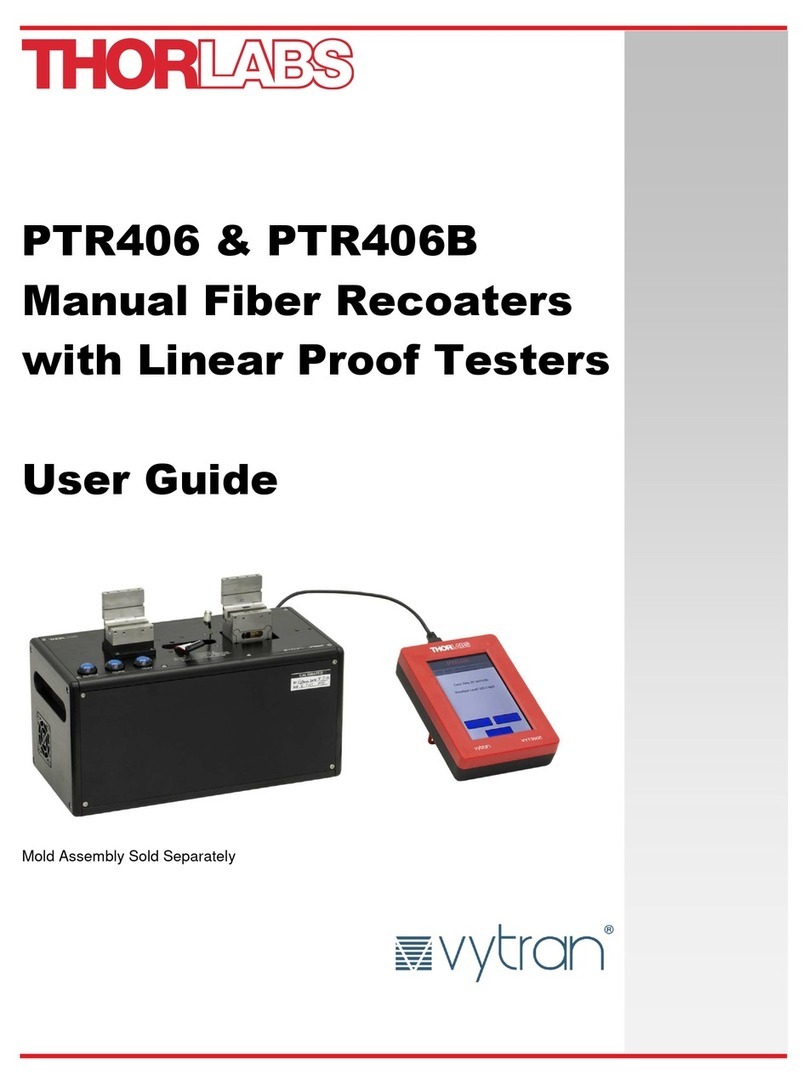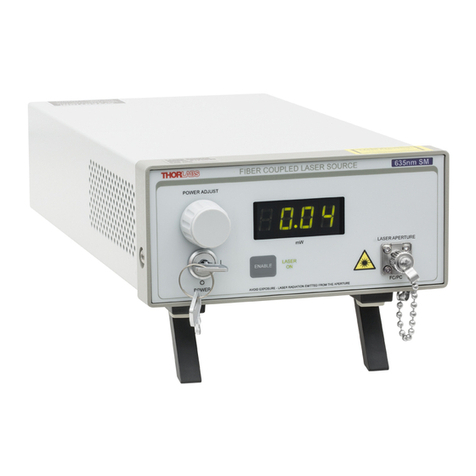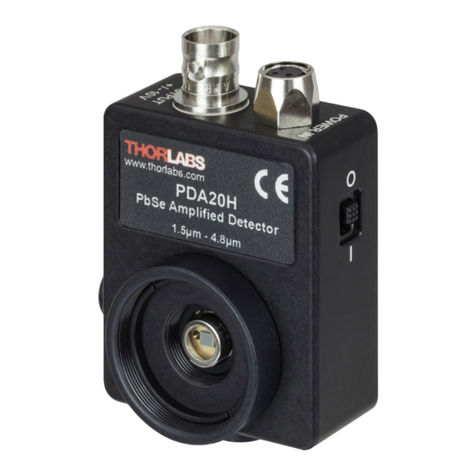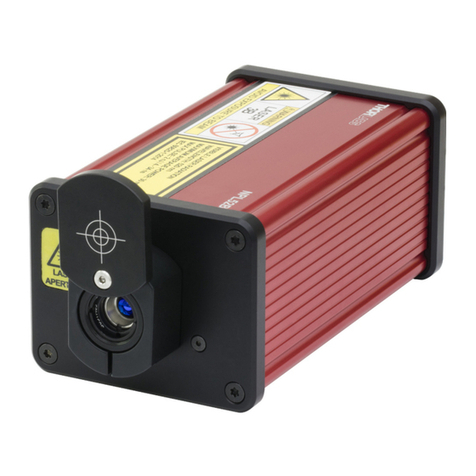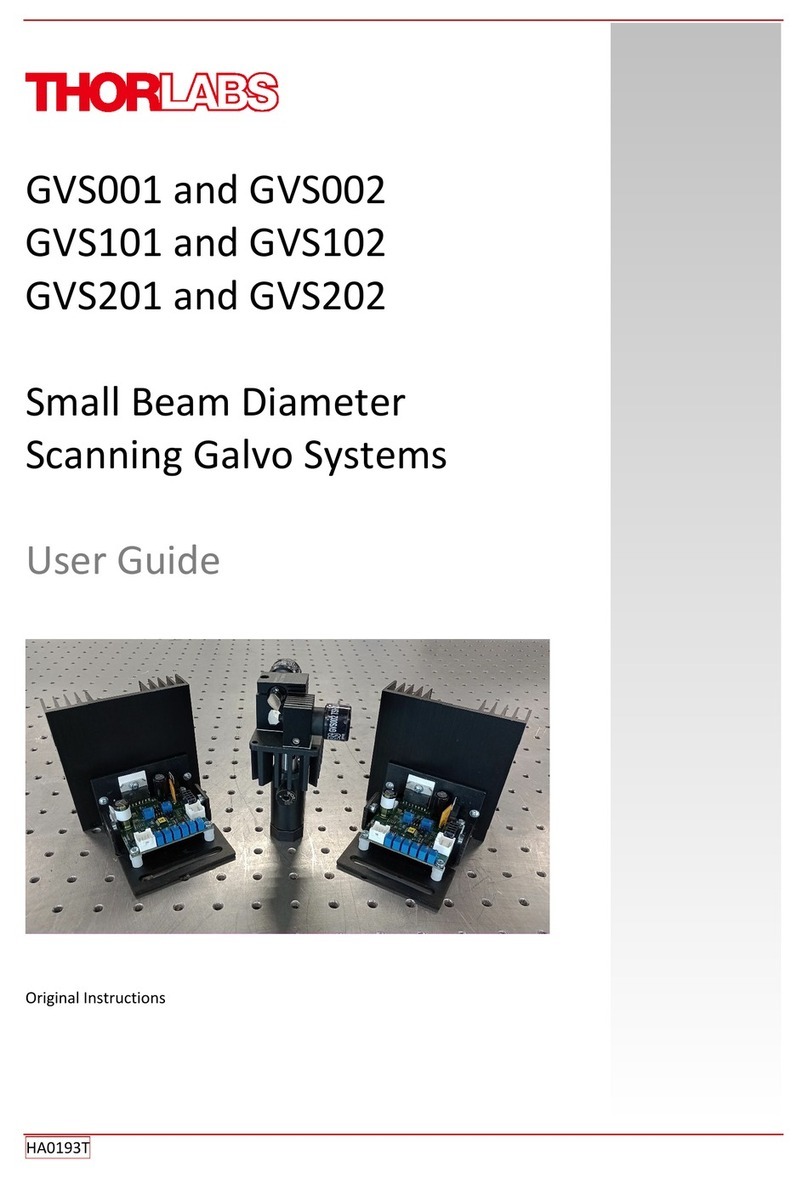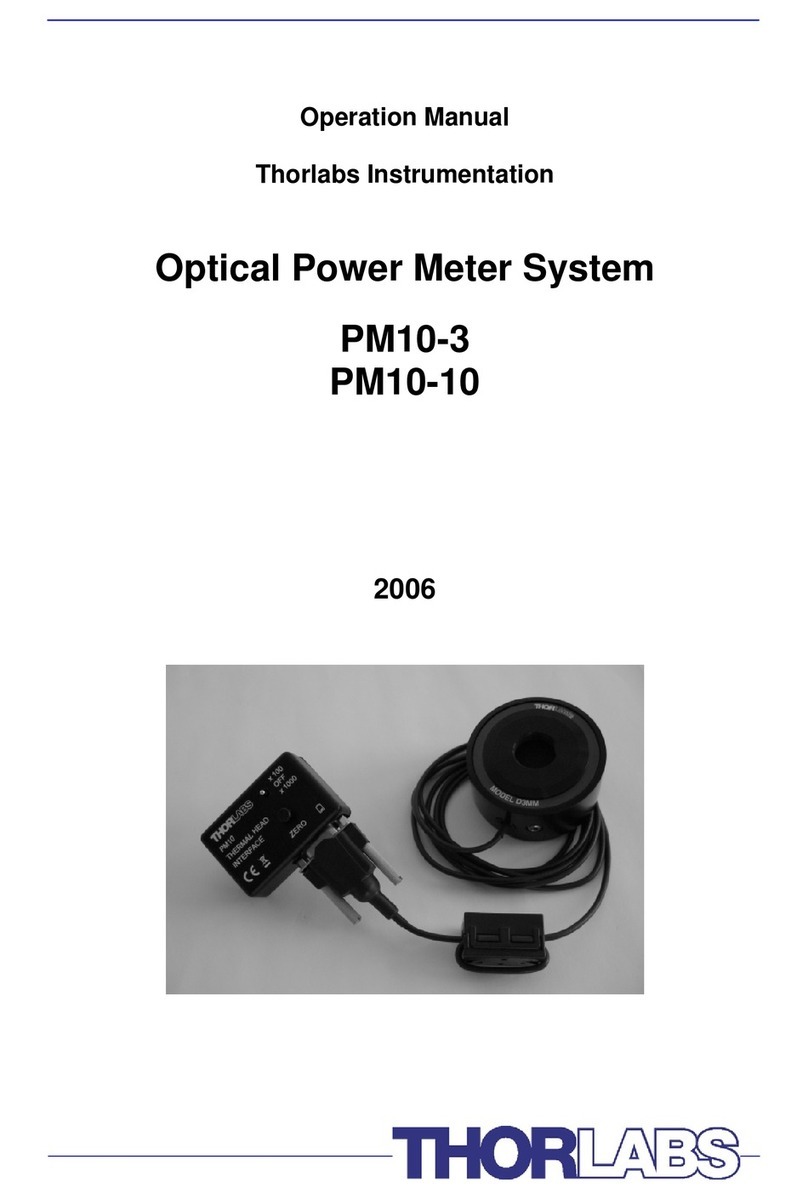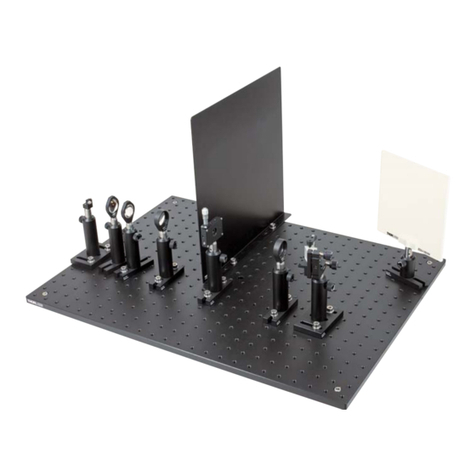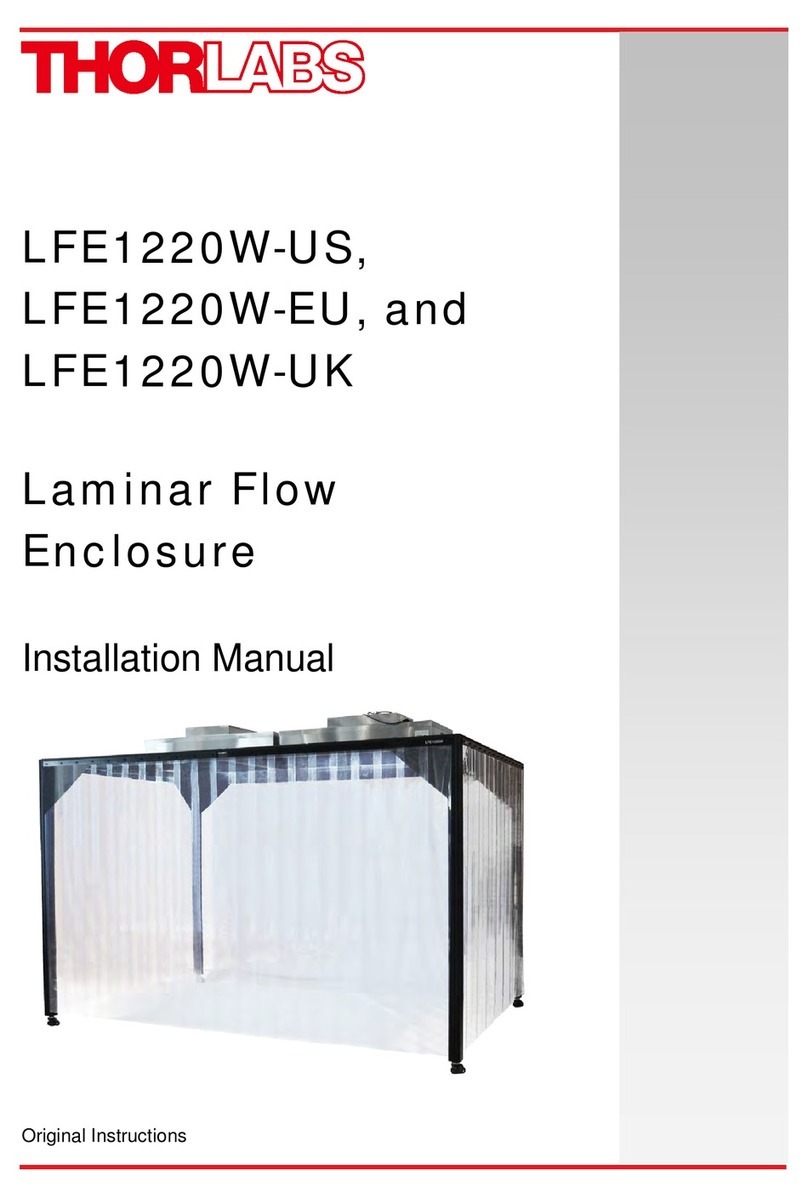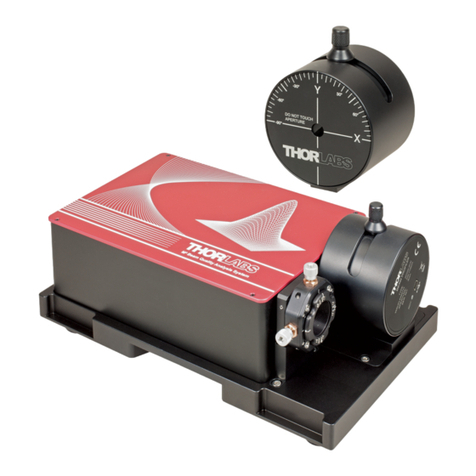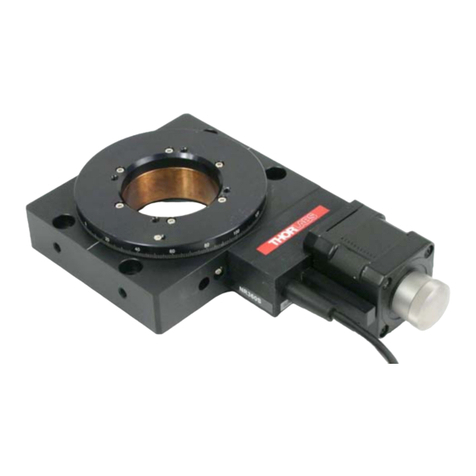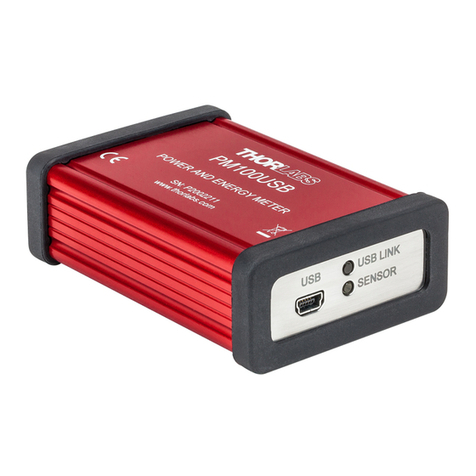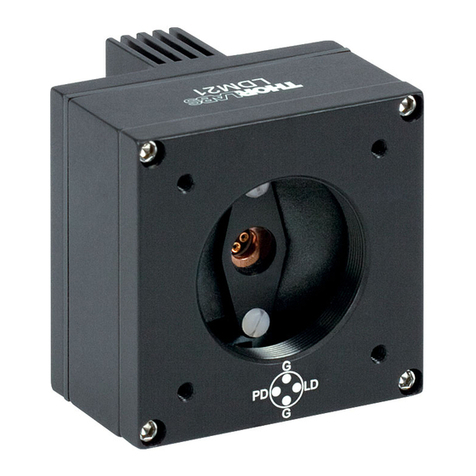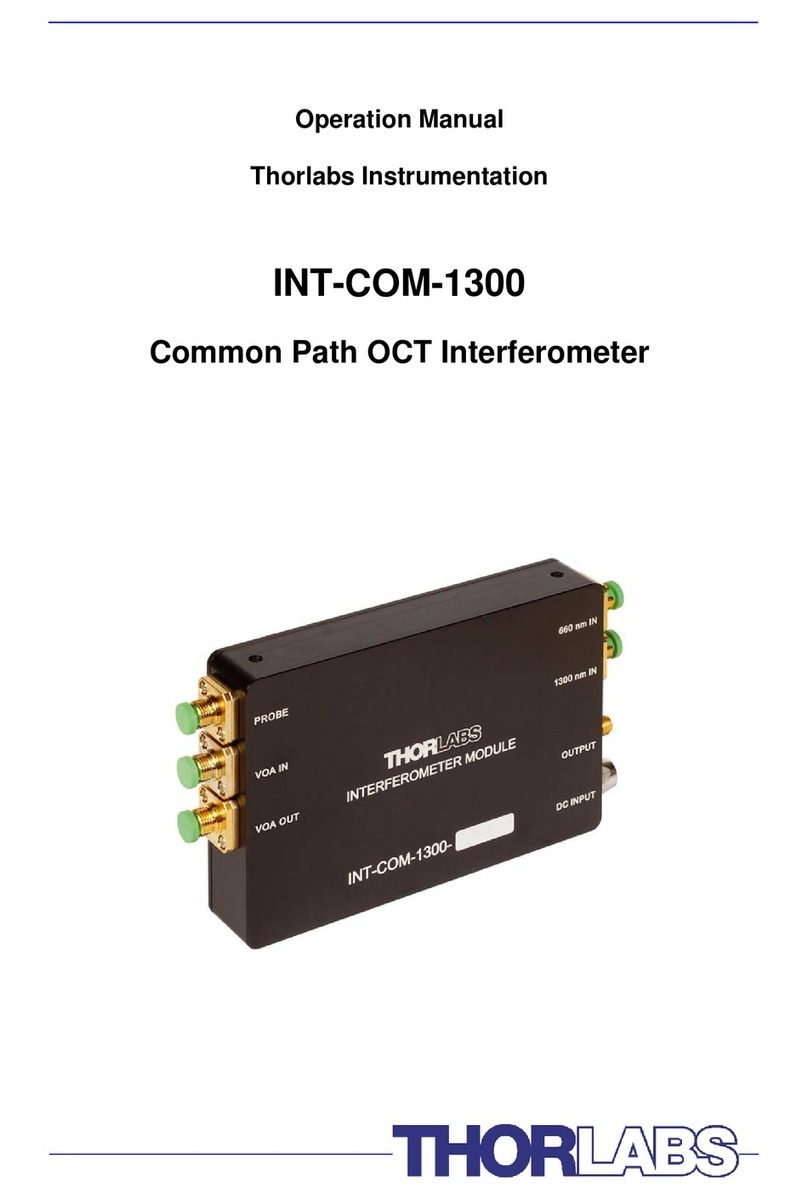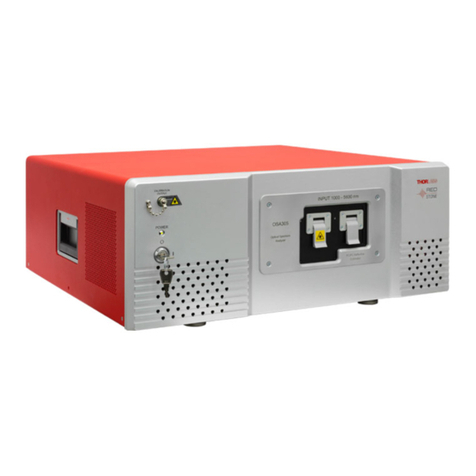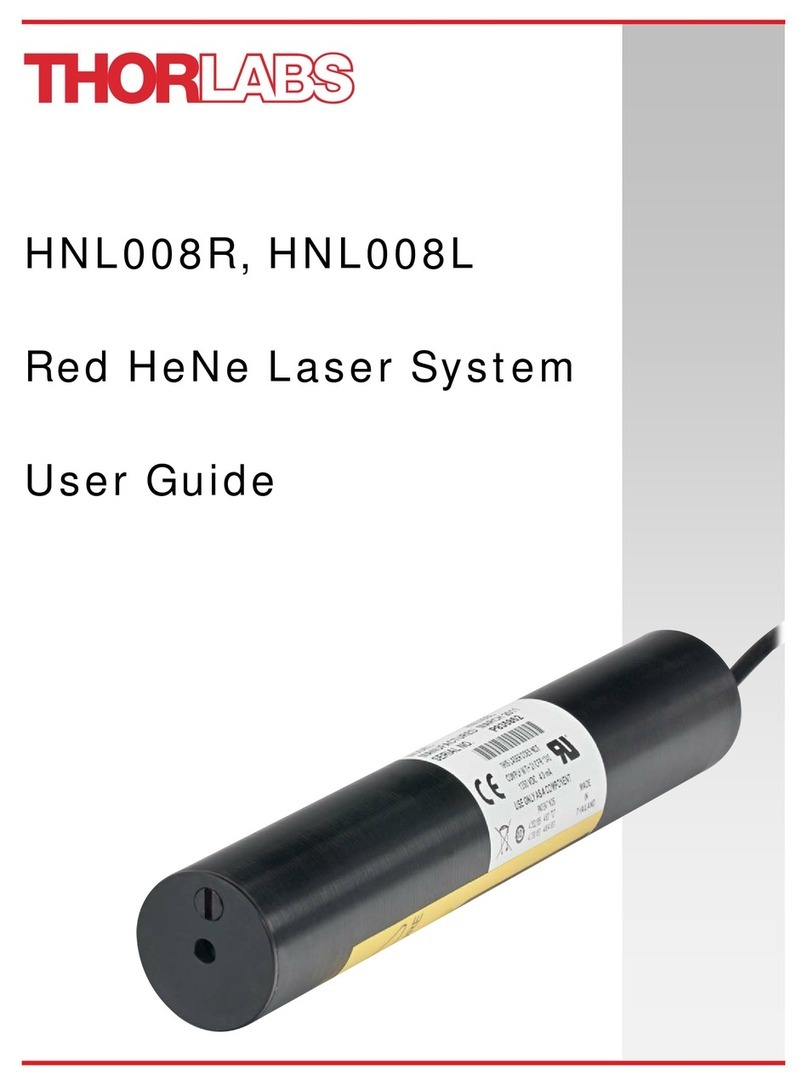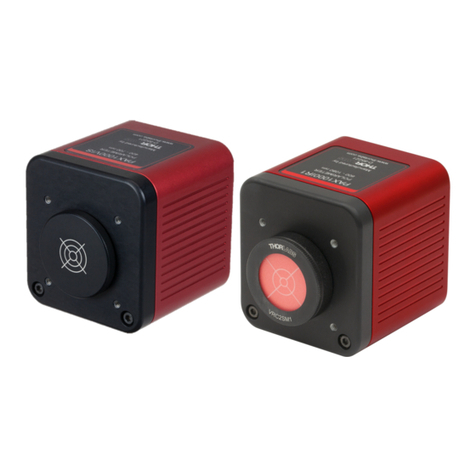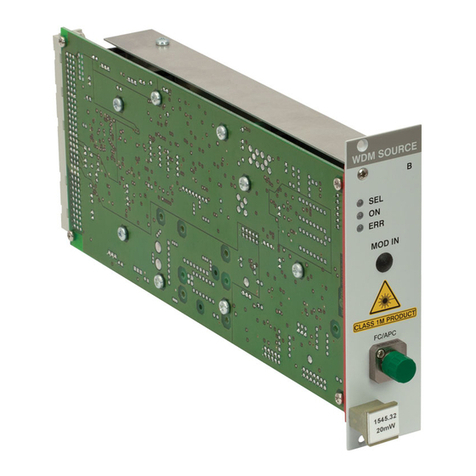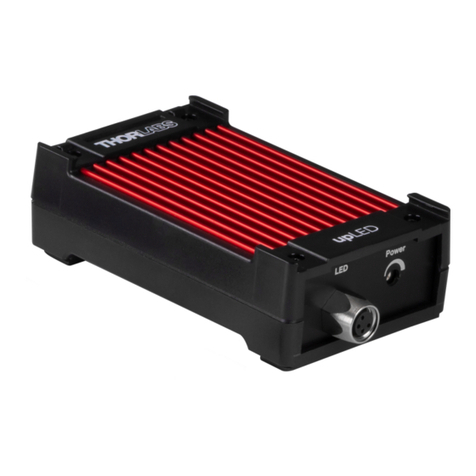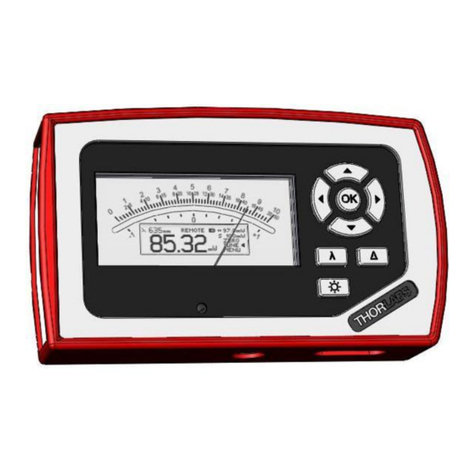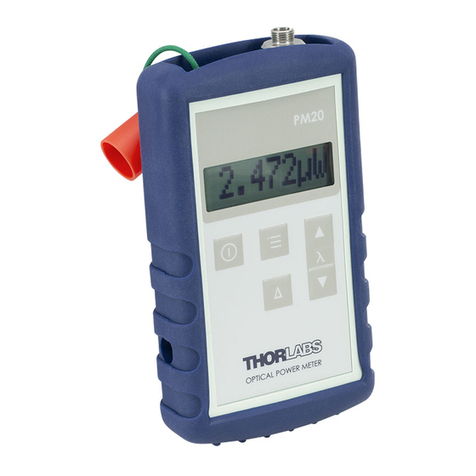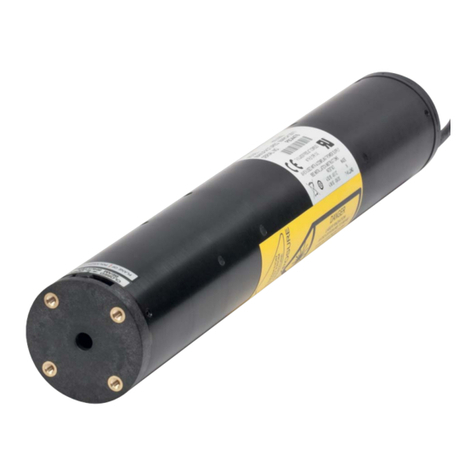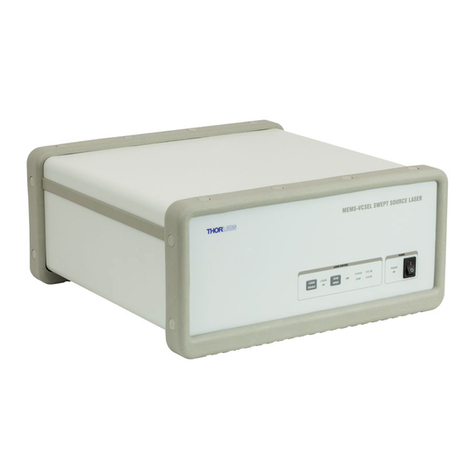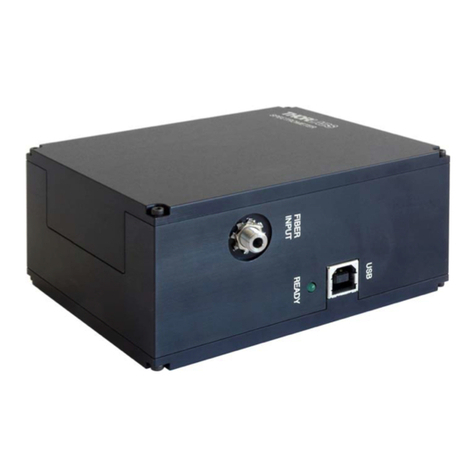FSL1030X1 Ytterbium Femtosecond Fiber Laser Chapter 2: Description
Rev. A, June 10, 2022 Page 7
Chapter 2 Description
Introduction
The Thorlabs FSL1030X1 Femtosecond Fiber Laser is a high power (Class IV) femtosecond fiber laser consisting of
a femtosecond oscillator, pulse picker, fiber amplifier, and tunable compression for amplifying femtosecond
pulses up to 3.0 µJ.
Ytterbia FSL1030X1 laser emits <250 fs pulses (<220 fs typical) with a center wavelength of 1035 nm at
a user selectable repetition rate between 1 - 11 MHz. This fiber laser is based upon an oscillator, pulse picker, and
a chirped pulse amplifier, yielding reliable turn-key operation and exceptional long-term reliability. The FSL1030X1
has a collimated free-space output with a 2.0 2.5 mm mode field diameter (1/e2intensity diameter). The laser
is controlled through agraphical user interface (GUI).The laser is used in applications where high peak and average
power are required. The product is intended to be used in an indoor laboratory environment.
The pulse picking system is based on frequency division of the femtosecond oscillator, which operates at 56 MHz.
Only integer multiples of the 56 MHz are attainable. For example, a frequency divisor of 56 produces an amplified
pulse train at 1 MHz, where 1 pulse out of every 56 is passed through the pulse picker and on to the amplifier. For
smaller divisors however, the spacing between accessible repetition rates becomes more coarse. Consider divisors
of 7 and 6, the resultant amplified pulse train repetition rates are 8 and 9.3 MHz. The available repetition rates, 1
11 MHz, for which the laser is qualified are populated in a drop-down menu in the GUI.
A unique feature of the Ytterbia FSL1030X1 laser is the pulse energy as a function of repetition rate, which is nearly
constant across tuning range. From 1 5 MHz, the pulse energy is 3.0 µJ, so the average power increases linearly
depending on the user selected repetition rate. Above 5 MHz, the laser power trends towards its maximum of
approximately 20 W, with the pulse energy at the maximum repetition rate of 11 MHz being 2 µJ.
An enable key switch must be put the laser into a Ready state on startup, where
the Ready state simply means the user can turn on the laser through the GUI. Keep in mind, this usually will mean
cycling the key fr
e, which
energizes the oscillator. This is effectively a Simmer state, and the laser can remain in this condition safely for
prolonged periods of time. LED indicators displays the current state of the unit. When the Seeder Power radio
toggle is engaged, there is a 3 second delay before the seeder turns on, and the user is warned by the blinking
LEDs. In the Simmer state the user can change the repetition rate of the pulse picker.
Before turning on the main amplifier, the user should determine if they want the full power or an alignment (low)
power. For power sufficient to align with, the Diode Current can be set to 1 - 1.5 A. Otherwise, the GUI will default
to the recommended current to achieve full performance of the laser, where the current is set to this default
when the repetition rate is changed. Before turning on the main amplifier, the user should ensure the output
beam path is safe or the shutter is closed. To turn on the main amplifier, the user selects the
toggle to turn it to energize the pump diodes.
The laser pulse intensity is NOT invariant with pulse energy, i.e. Diode Current setting. The laser is designed for
optimal performance at the full power allowed at each repetition rate, and the pulse characteristics are only
qualified at the full power/energy. If an experiment requires less power, then they need to either ensure the
pulses at lower Current and power/energy are suitable for their experiment through their own characterization
OR to use a waveplate polarizer to attenuate the laser while it runs at its specified Diode Current per the set
repetition rate.
A manual aperture shutter allows blocking the output beam even when the laser emission is on.
